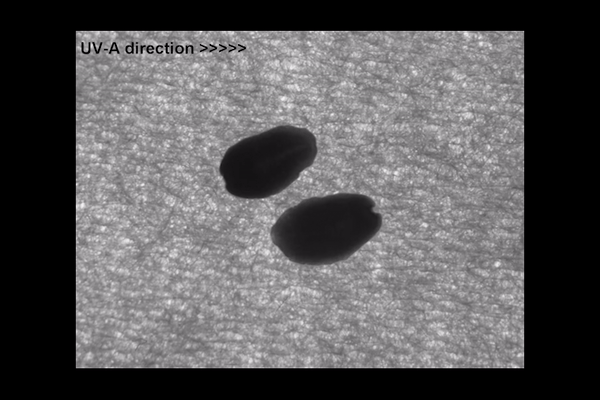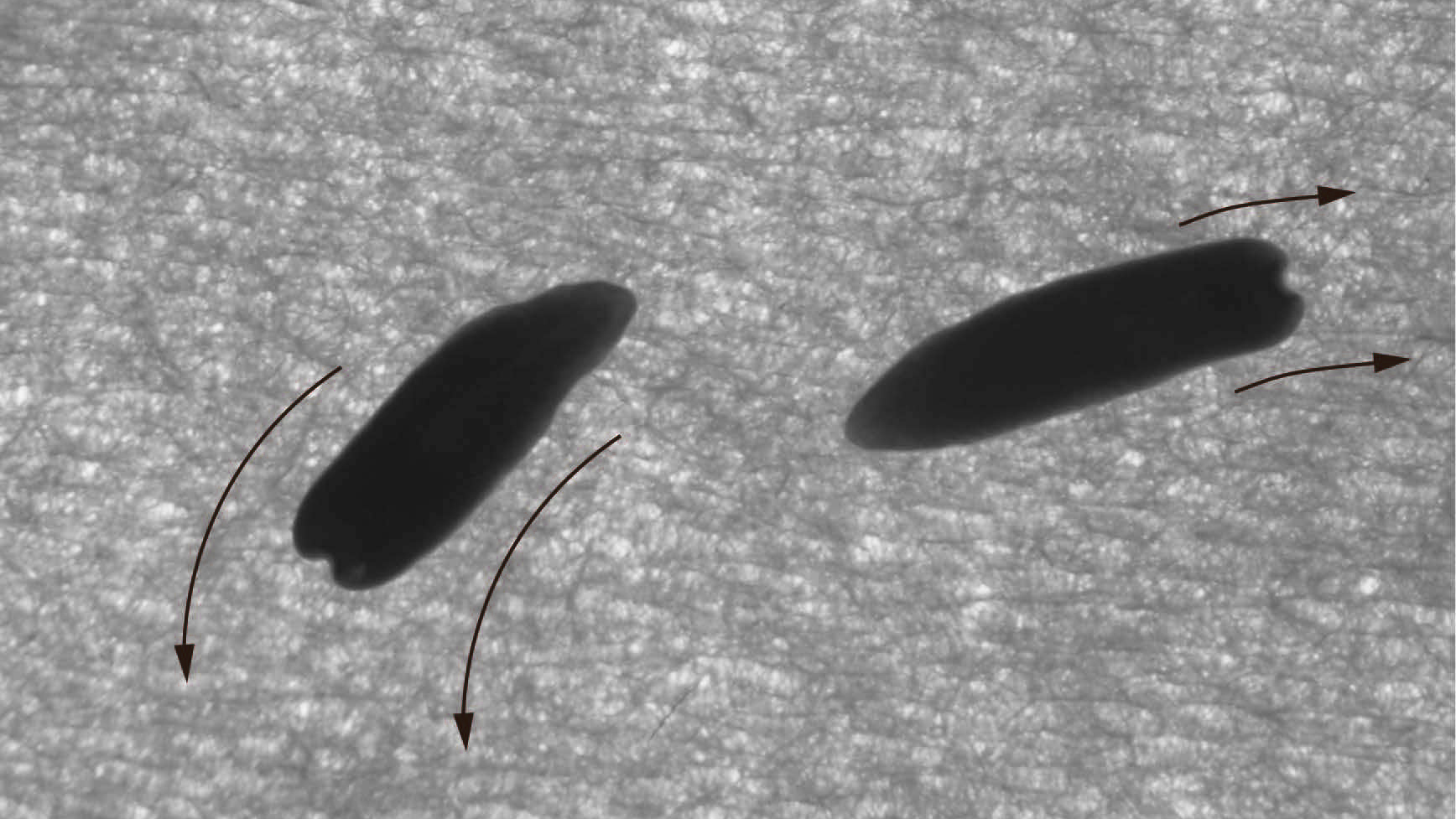Decapitated worms 'see' with their headless bodies
Light-sensitive cells activate in the absence of eyes.

Tiny worms can "see" light without their eyes — or their heads, scientists recently discovered.
Planarians are a type of flatworm, which are soft-bodied creatures that lack complex organs. They have two eyes that connect to a centralized bundle of ganglia in their heads that acts as a brain, and those eyes are sensitive to ultraviolet (UV) light. In the presence of UV light, the worms use their cilia — tiny hairlike structures on their bodies — to wriggle away.
However, it turns out that the wee worms — measuring just a few millimeters long — don't need their eyes or their brains for light detection. When researchers lopped off planarians' heads, the worms were still capable of sensing UV light.
Related: In photos: Worm grows heads and brains of other species
Removing an animal's head might seem like an odd way to conduct behavior experiments. But planarians are known for not only surviving decapitation, but also for easily regenerating missing body parts. Amputation is no big deal for a planarian; cut one into multiple pieces and each piece will regenerate into a new worm, according to the Max Planck Institute for Molecular Biomedicine in Münster, Germany.
Decapitated planarians easily grow new heads, and scientists can even tweak the worms' genetic instructions to coax them into growing the heads of different species, Live Science previously reported.
In the new study, published online May 3 in the journal Proceedings of the National Academy of Sciences (PNAS), the researchers found that planarian bodies contain cells that produce a type of light-sensitive protein called an opsin. Arrays of these cells found around the periphery of the planarians' bodies expressed two opsins — NC R-opn 1 and NC R-opn 2 — while the more centrally located cell populations only expressed NC R-opn 1.
Get the world’s most fascinating discoveries delivered straight to your inbox.
The cells producing just one opsin were pigment cells, the researchers found. In the peripherally-located cells, the two opsins first detected UV light and then triggered movement in the headless worm, which wriggled away in response to that light. Only mature worms possessed this light-sensing superpower; newly hatched worms couldn't detect UV light after their heads were snipped off, hinting that light-sensing cells in the worms' bodies develop after hatching, the researchers wrote.
The scientists also found that when whole planarians were resting in an inactive sleep-like state, they would perk up in the presence of UV light, even when they didn't respond to other visual stimuli. This suggests that whole-body light-sensing helps protect snoozing worms from harmful UV rays by activating movement when the worm is at rest and its vision is temporarily offline.
"Such a mechanism may be distinctly advantageous to a water-dwelling, light-aversive organism that is likely nocturnal and would rest during the day," the scientists wrote.
The discovery of a whole-body light-sensing infrastructure in planarians that doesn't require a central brain or eyes represents "a major advance spanning virtually all facets of photosensory biology," the study authors reported. "Our work showcases the fascinating complexity of form and function of an eye-brain-independent light-sensing network."
Originally published on Live Science.

Mindy Weisberger is a science journalist and author of "Rise of the Zombie Bugs: The Surprising Science of Parasitic Mind-Control" (Hopkins Press). She formerly edited for Scholastic and was a channel editor and senior writer for Live Science. She has reported on general science, covering climate change, paleontology, biology and space. Mindy studied film at Columbia University; prior to LS, she produced, wrote and directed media for the American Museum of Natural History in NYC. Her videos about dinosaurs, astrophysics, biodiversity and evolution appear in museums and science centers worldwide, earning awards such as the CINE Golden Eagle and the Communicator Award of Excellence. Her writing has also appeared in Scientific American, The Washington Post, How It Works Magazine and CNN.



